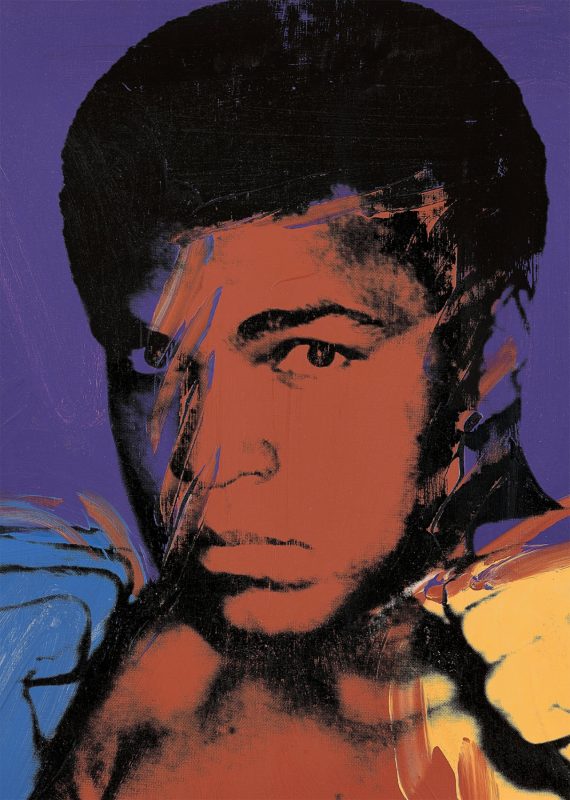
An Andy Warhol drawing published in From Silverpoint to Silver Screen. Photograph: The Andy Warhol Foundation for the Visual Arts, Inc
When the gallerist Daniel Blau met the gatekeeper of the Andy Warhol foundation in New York and asked if there was any more of the artist’s unseen work that could be had, he was not hugely optimistic. He could scarcely believe his eyes when forgotten and unpublished early drawings locked away for more than 20 years were brought out.
“It was unbelievable … just unbelievable,” Blau told the Guardian. “The Warhol Foundation storage at Crozier is like a hospital – a huge bare room with these metal trestle tables in the middle and big metal doors, so you sit there and wait for what comes. They bring them in and open them up and I just gasped … Wow! I just never expected anything like that to be still there.
“It was like someone opened a trunk of your favourite toys that you’d kept aside as a child and they were put in storage when you went to school and you’d never seen them since. And then someone comes along 30 years later and says do you remember this? And it’s, wow! Do I remember!”

The 300 drawings from the 1950s are a revelation, and they will be published for the first time next week. They show another side to Warhol, an artist we mostly know for his pop art screen prints, his soup cans, car crashes, Marilyns and so on. Here, said Blau, we see a skilled and sensitive draughtsman producing images that are more Egon Schiele than pop art.
Blau said the drawings shed fascinating light on Warhol’s working practices and influences. “You see where he comes from. They show that he is an incredible draughtsman.”
They are being published in a new book edited by Blau and exhibited at the Louisiana museum in Denmark and later in Holland, and will then be available to buy, helping to feed what seems like an unquenchable demand for Warhol’s works from collectors with the money to afford them. Warhols attract big money – in 2008, his 12ft painting Eight Elvises was bought for 0m (£62m) and at last November’s big New York sales his 1962 Statue of Liberty sold for m (£24m) – and his works are among the most traded of any artist.
Warhol drawings, too, do not come cheap. At next month’s big London contemporary art sales, Sotheby’s is offering a 1983 drawing of Alfred Hitchcock with an estimate of £10,000-15,000.

While the 1950s drawings may add a new dimension to the Warhol market, artistically, they are also likely to throw up their own stories. Blau said: “I’m still going through all of this and discovering one after the other – it is quite a nice undertaking, fascinating.”
Some of the stories are clearer than others. For example, there are drawings of a young junkie injecting himself with drugs that relate to a spoken-word LP cover Warhol illustrated in 1951, The Nation’s Nightmare, a CBS Radio investigation into drugs. Another, of a lounging girl, became the cover of an album, Blue Lights, by the jazz guitarist Kenny Burrell.
Warhol also drew directly from photographs, including one of a flag-waving crowd greeting Prince Philip when he visited the US in the mid-1950s. Another is from a 1911 Lewis Hine photograph of coalmining breaker boys – they literally broke the coal – possibly reflecting Warhol’s background in that his father was a Pittsburgh coalminer.
There are drawings that can be linked to the artist’s later works – two hands holding pistols brings to mind his 1964 silkscreen of James Cagney, for example. And a drawing from 1958, Face Repeated Eight Times, reflects his obsession with repetition – 100 Soup Cans, Eight Elvises and so on.
Blau’s favourites include one of a serious-looking girl from 1954, and another from 1951 – when Warhol would have only been 22 or 23 – of a boy clenching his hands.

Blau, who has galleries in London and Munich, has a longstanding connection with the foundation. He staged his first Warhol show in 1995, eight years after the artist’s death and a time when it was nearly impossible to find buyers, he said. The gallerist said there was a widespread assumption that Warhol’s output was enormous, that there is an almost inexhaustible supply of his works – “but that is not the case”. When the first part of the artist’s catalogue raisonnée came out in 2002 it became clear just how limited his oeuvre is.
In the book, Blau writes: “The supply of available paintings in the estate has been depleting for some time and is foreseeably reaching a point of exhaustion.”
That led Blau to Warhol’s drawings, and he staged a show in 1997 called Physiological Diagrams. Another, in 2004, showcased Warhol’s 1950s drawings based on the street photography of Edward Wallowitch, while in 2008 Blau opened an exhibition of drawings called Andy Warhol Stereo Types.
In 2011, Blau approached Vincent Fremont, who acts as mediator between the Andy Warhol Foundation and art dealers, asking if there was anything else in the depleted stores from which a meaningful show could be put on. The drawings he brought out, which had been sitting undisturbed since they were archived in 1990, were a surprise both to the foundation and to Blau.
• From Silverpoint to Silver Screen, Warhol: The 1950s Drawings is published by Hirmer on 28 January.
guardian.co.uk © Guardian News & Media Limited 2010
Published via the Guardian News Feed plugin for WordPress.







